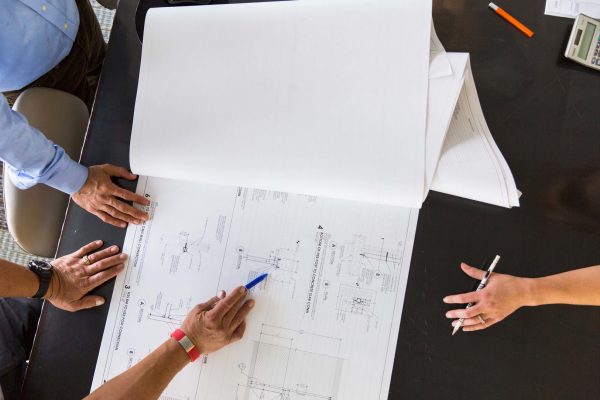
Capital improvement projects can be completed under numerous contractual methods. Two commonly applied delivery methods in public and private projects are design-build and design-bid-build.
Design-Bid-Build (DBB)
The traditional DBB project delivery method typically involves three sequential project phases: the design phase, the bid phase, and the construction phase. This sequence usually leads to a sealed bid, fixed-price contract.
Pros
-
This method is widely applicable, well understood, and has well-established and clearly defined roles for the parties involved.
-
This method is the most common approach for public owners having to comply with local, state or federal procurement statutes.
-
The owner has a significant amount of control over the end product, particularly since the facility’s features are fully determined and specified prior to selection of the contractor.
Cons
-
The process may have a longer duration when compared to other delivery methods since all design work must be completed prior to solicitation of the construction contract.
-
The designer may have limited ability to assess scheduling and cost ramifications as the design is developed, which can lead to a more costly final product.
-
The owner generally faces exposure to contractor change orders and claims over design and construction issues since the owner accepts liability for design in its contract with the contractor.

Design-Build (DB)
This method of project delivery includes one entity and a single contract with the owner to provide both architectural/engineering design services and construction.
Pros
-
DB can produce a project more quickly than a conventional DBB – fast-track, less project duration.
-
There is a single point of accountability for design and construction.
-
Cost efficiencies can be achieved since the contractor and designer are working together throughout the entire process.
-
Change orders would typically arise primarily from owner changes.
Cons
-
Less design control and involvement by the owner and stakeholders.
-
Owner must be highly responsive in its decision making to take full advantage of the speed of DB.
-
The owner does not receive the benefit of the checks and balances that exist when it contracts separately with a designer and a general contractor.
In determining which project delivery method and contractual arrangement to employ, owners should carefully analyze their:
-
Capacity and technical capability to closely manage the process
-
Sensitivity to cost and schedule escalations
-
Degree of comfort with bearing project risk
Owners who have little funding to closely manage the construction process or have discomfort with bearing project risk tend to find the more collaborative DB delivery method more effective.
Several factors need to be considered when selecting a project delivery method that best fits the goals and requirements of the owner and the project. Contact Creative Builds to learn which method would be most beneficial for you and your project.
